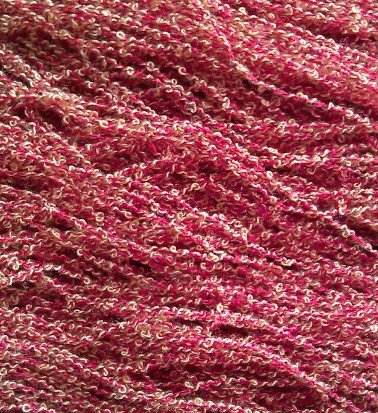What is the impact of yarn structure on fabric comfort and durability?
The basic characteristics of yarn include its appearance and shape, twisting characteristics, fiber transfer and dispersion characteristics in the yarn, as well as the surface fuzz and internal fluffiness of the yarn. They are important features and expressions of yarn structure, determining the appearance and connotation quality of the yarn, and also affecting the properties of the fabric.
1. The influence of yarn structure on thermal insulation
The structural characteristics of yarn are inevitably related to the warmth retention of clothing, as the structure of yarn determines whether a stagnant air layer can be formed between fibers.
The yarn structure is fluffy, and there are many empty spaces in the fabric, forming an air layer. When there is no wind, there is more air to stop, and the insulation is good; When there is wind, the air can smoothly pass between the yarns, so the coolness is better. For tightly structured yarns, the fabric woven from them also has a relatively tight structure, which hinders air movement and provides better insulation; When the structure is too tight, the amount of air trapped in the fabric decreases, that is, the decrease in air stops, resulting in poor insulation.
2. The influence of yarn structure on moisture absorption
The moisture absorption of yarn depends on the fiber properties and yarn structure. If the long silk yarn is smooth, it is easy to stick to the body when woven into fabric. If the fabric is tight, it is difficult for moisture to penetrate the fabric. The surface of short fiber yarn has fuzz, reducing contact with the skin and improving breathability, making it comfortable to wear.

3. The impact of yarn structure on durability
The tensile strength, elasticity, and wear resistance of yarn are influenced by the structure of the yarn.
The influence of yarn structure on pilling function: After one fiber breaks in a long filament yarn, one end still adheres to the yarn, and the broken end bends itself, causing pilling due to conflict; Blended short fiber yarn has poor grip and is prone to detachment.
The effect on elasticity of short fiber yarn: Applying a certain external force to the short fiber yarn, the short fiber is straightened from bending, and the external force is removed, which can restore its elasticity; After the short fibers are straightened, if force is continued to be applied, they will slip or slide between each other, and withdrawing the external force will result in irreversible deformation.
Long filament yarn: Applying external force to long filament yarn, as it does not bend itself and the degree of extension depends on the function of the fiber, its elasticity is relatively small.
Twist also has a significant impact on elasticity: yarns with high twist have greater conflicts between fibers, so they are not easily stretched within the elastic range and have relatively poor elasticity; And yarns with low twist have less fiber to fiber conflict, are relatively easier to stretch, and have better elasticity.
Article source: Fancy Thread Manufacturer
-
05-27
The reason why fabrics containing spandex are prone to yellowing
Spandex is a commonly used fiber variety in our daily lives, characterized by good elasticity, low fineness, high elastic modulus (cracking elongation can reach 400-800), and low specific gravity. Spa
-
04-24
Colored non dyed nylon with synthetic fiber raw material
The current conventional fiber coloring mostly uses yarn dyeing method, which has long process, high loss, high cost, and the product has color difference and low color wash fastness. Yarn is prone to
-
03-26
What are the characteristics of non dyed spandex?
Non dyed spandex has also been widely used in recent years. Non dyed spandex fiber can be blended with fibers such as nylon, polyester, acrylic, cotton, wool, etc., which can give fabrics excellent el
-
02-24
The influence of yarn structure on fabrics
The basic characteristics of yarn include its appearance and shape, twisting characteristics, fiber transfer and distribution characteristics in the yarn, as well as the surface fuzz and internal loos
